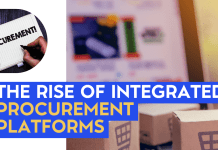Supply chain challenges are here to stay, but contingency planning is what will make projects successful, says Phil Smith, Associate Director, Rund
The story of the UK construction industry in 2021 can be crudely summarised as dysfunctional. Whilst many blame Brexit and others point the finger toward mushrooming global demand following the pandemic lockdowns, the truth is that in some respects the severe material shortages and rising costs that the sector is experiencing was almost expected.
Although many of the issues which compounded were out of our hands – responsibility for projects falling out of their timelines cannot solely be put down to the current circumstances. Whilst the world was evolving, the construction sector supply chain has fallen victim to its rigidity, meaning projects working to ‘just-in-time’ deliverables, have also suffered as a result.
I have the privilege of working on amazing projects, and over the years have seen first-hand what happens at the infancy stages before a build begins. There is untold amounts of excitement, and rightly so, but since the pandemic began, much has changed in the way we behave, live, work and communicate. We have all evolved and adopted the famed ‘new normal’.
“Behaviours in planning need rapid and drastic change”
Similarly, behaviours in the planning stages of projects also need a rapid and drastic change. The reality is, shortages and squeezed margins will be our sector’s new normal for the foreseeable future, and developers have to seek watertight solutions at the inception of a project, to be well placed to combat any challenges along the way.
Much of this depends on who is involved with and advising on the project. One of my biggest gripes I see in projects which have struggled is when they are brandished with extravagant promises. Whilst no one likes to be the ‘buzz kill’ in the room, it’s impossible to accurately plan for success if you’re not considering the potential pitfalls along the way.
Benefits of pre-planning
We find the stark difference in this on projects where our Project Management and Employer’s Agent teams are employed. Clients benefit from our emphasis on strong pre-planning. If longer lead times are to become everyday challenges, then expectations need to change too. With reluctance, ‘just-in-time’ must be consigned to history.
There are two parts to that. If a lead time rises from, say, two to twelve weeks, then orders need to be placed much earlier which raises issues where there are still ongoing design changes. Also, if the supplier notifies, with just days to go, for instance, that the delivery date will be missed, how much work on site will halt as a result? Broad-reaching scenario planning means that even the unexpected can be addressed pragmatically.
Cost Consultancy
The focus of our Cost Consultancy is also changing due to material shortages. With many costs skyrocketing, such as a doubling of timber prices, a tender value and actuality can be poles apart. By looking holistically at expenditure across a project, savings can be found that go some way to offsetting this. However, the laws of unintended consequences come into play, for example, insurance premiums rising due to the inflation of rebuilding or repair costs on a damaged building.
There is much to be considered, but in order for developers to stop pouring money into a black hole, greater importance on strong pre-planning must be implemented. This includes taking a holistic view of expenditure to offset rises in one area with savings in another.
With sustainability high on the agenda, increased recycling can be one solution for critical shortages with environmental benefits too. Combined these will see positive results in this new, and often challenging normal.













